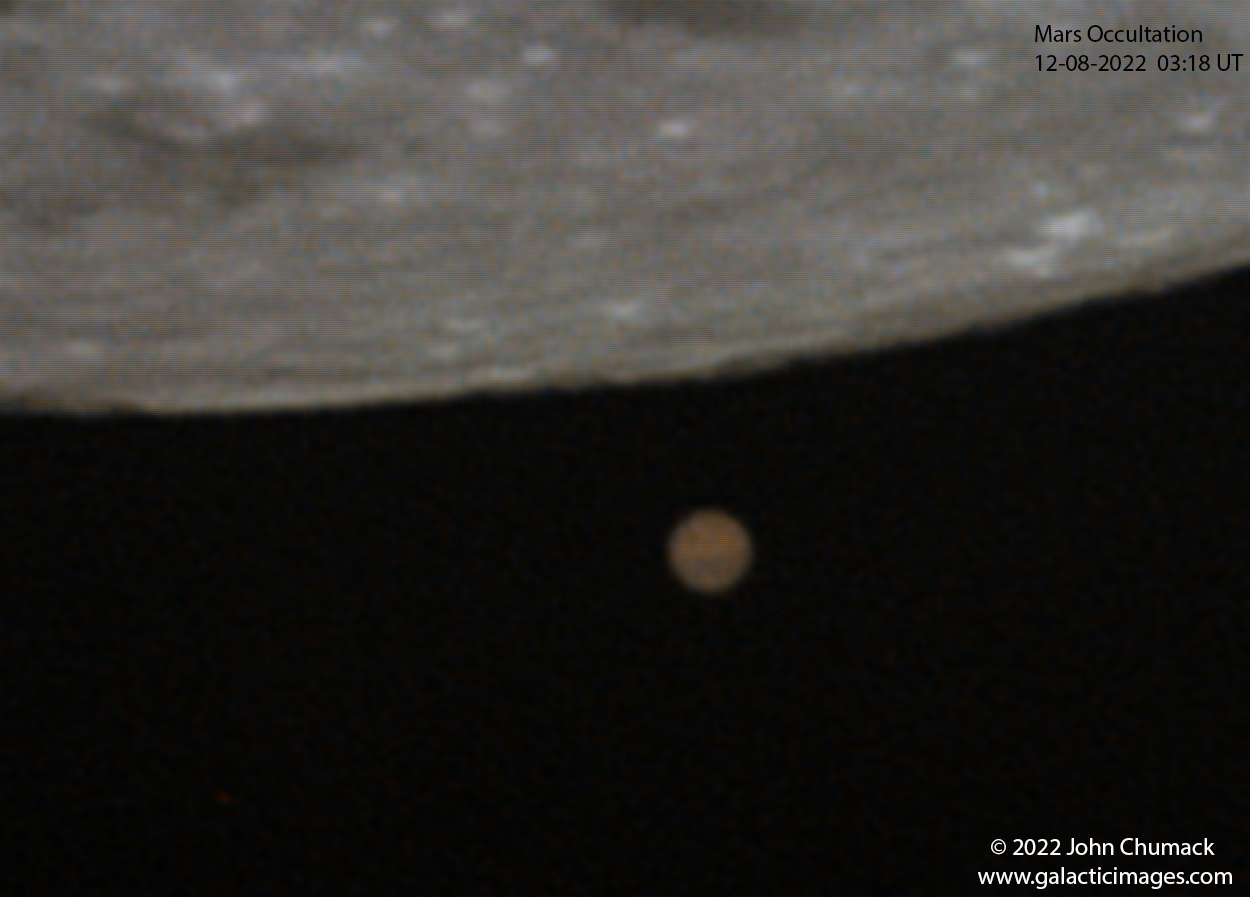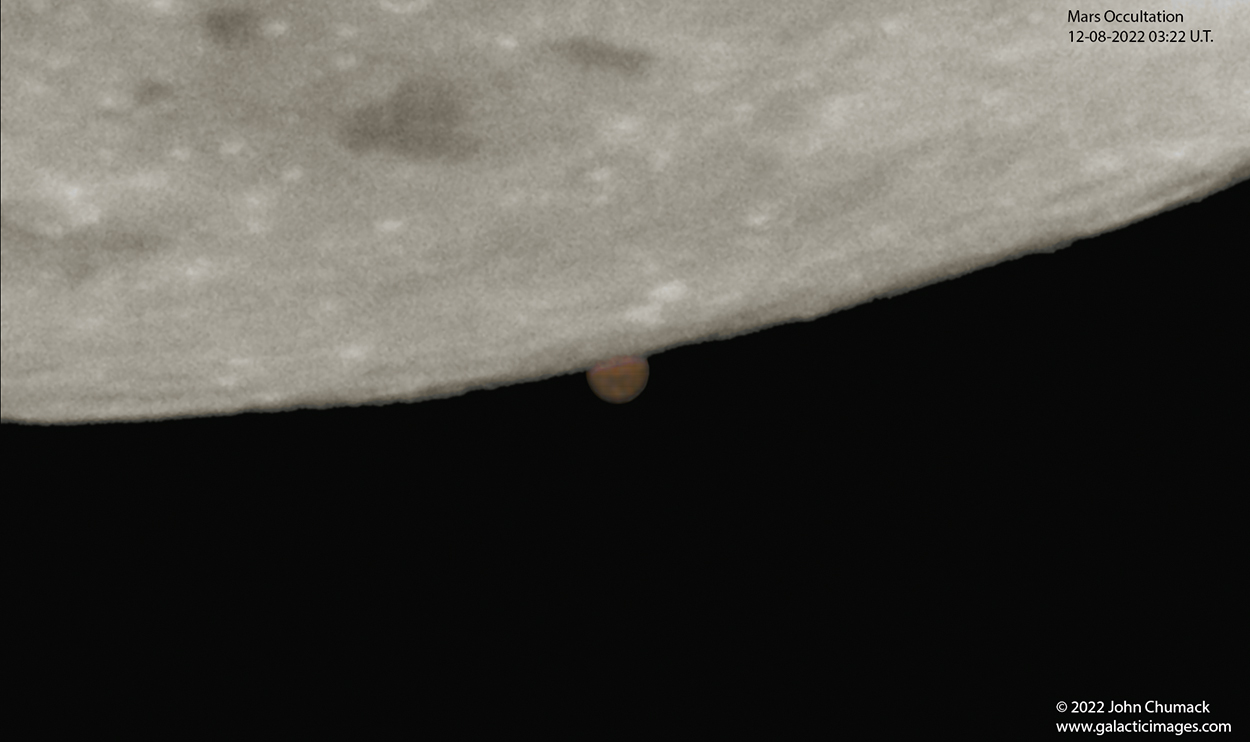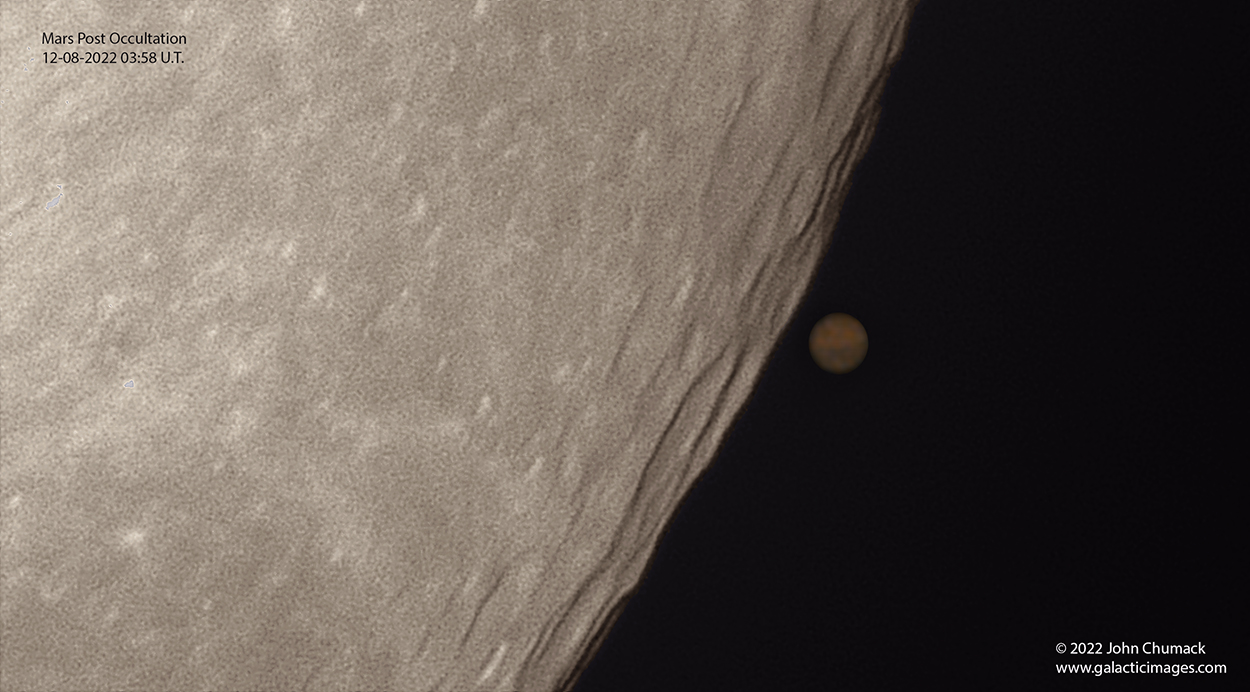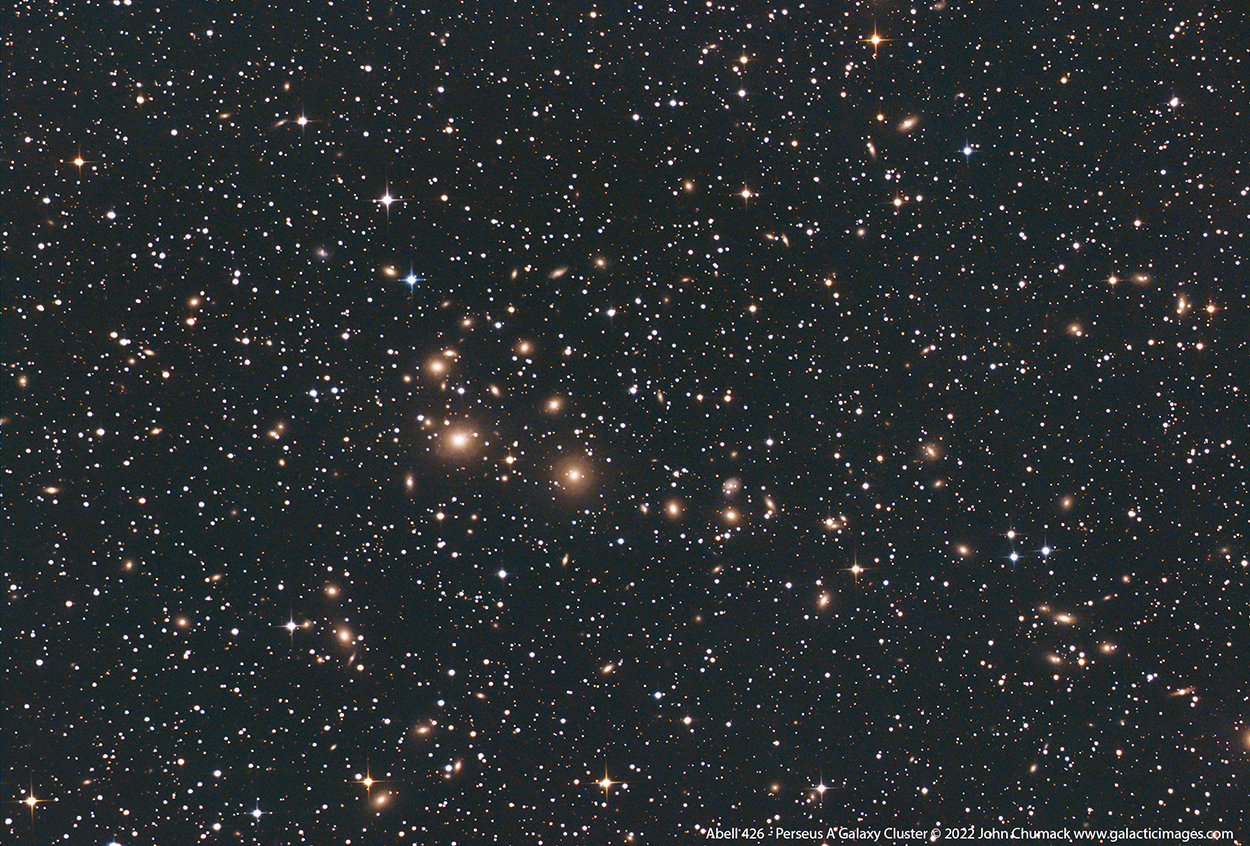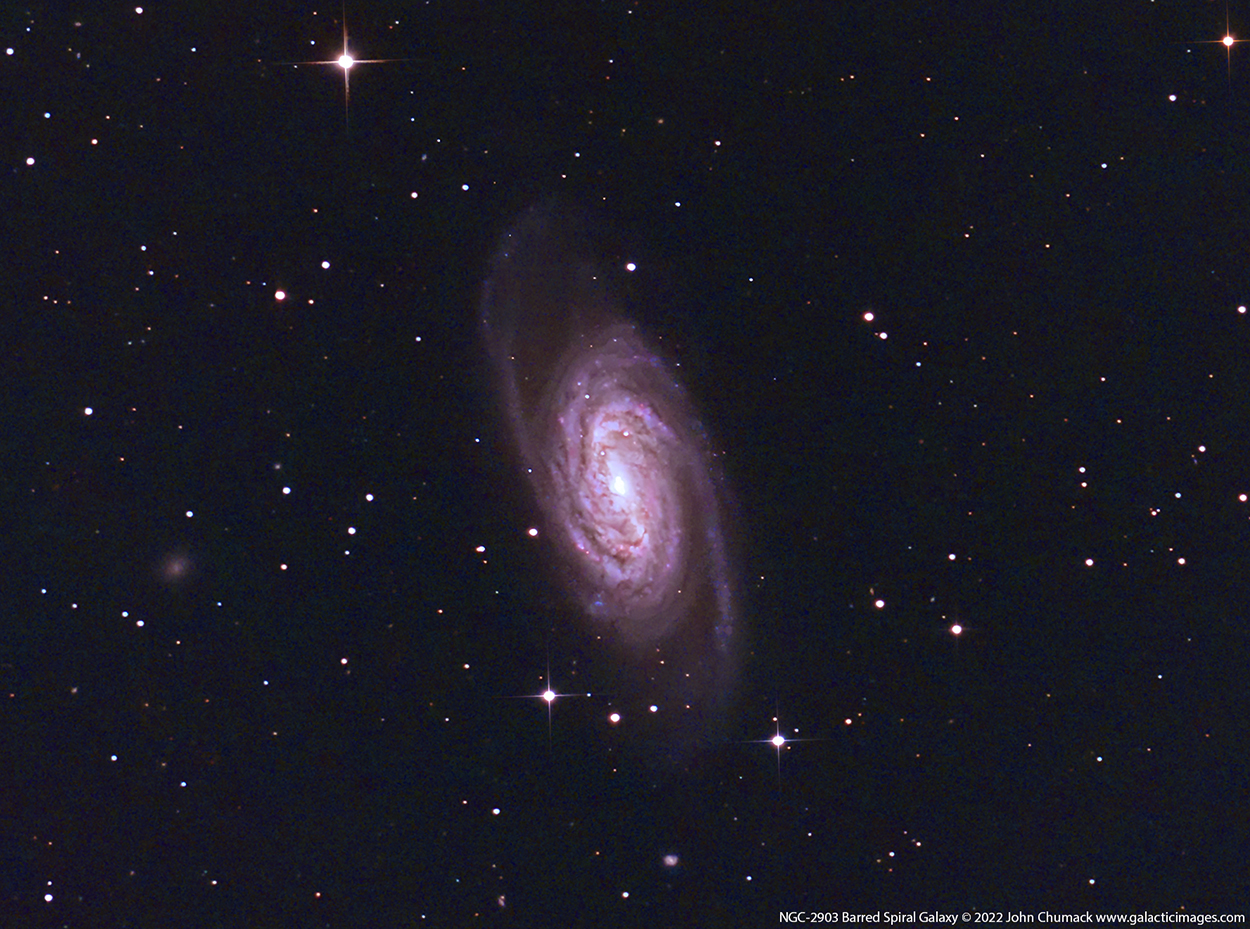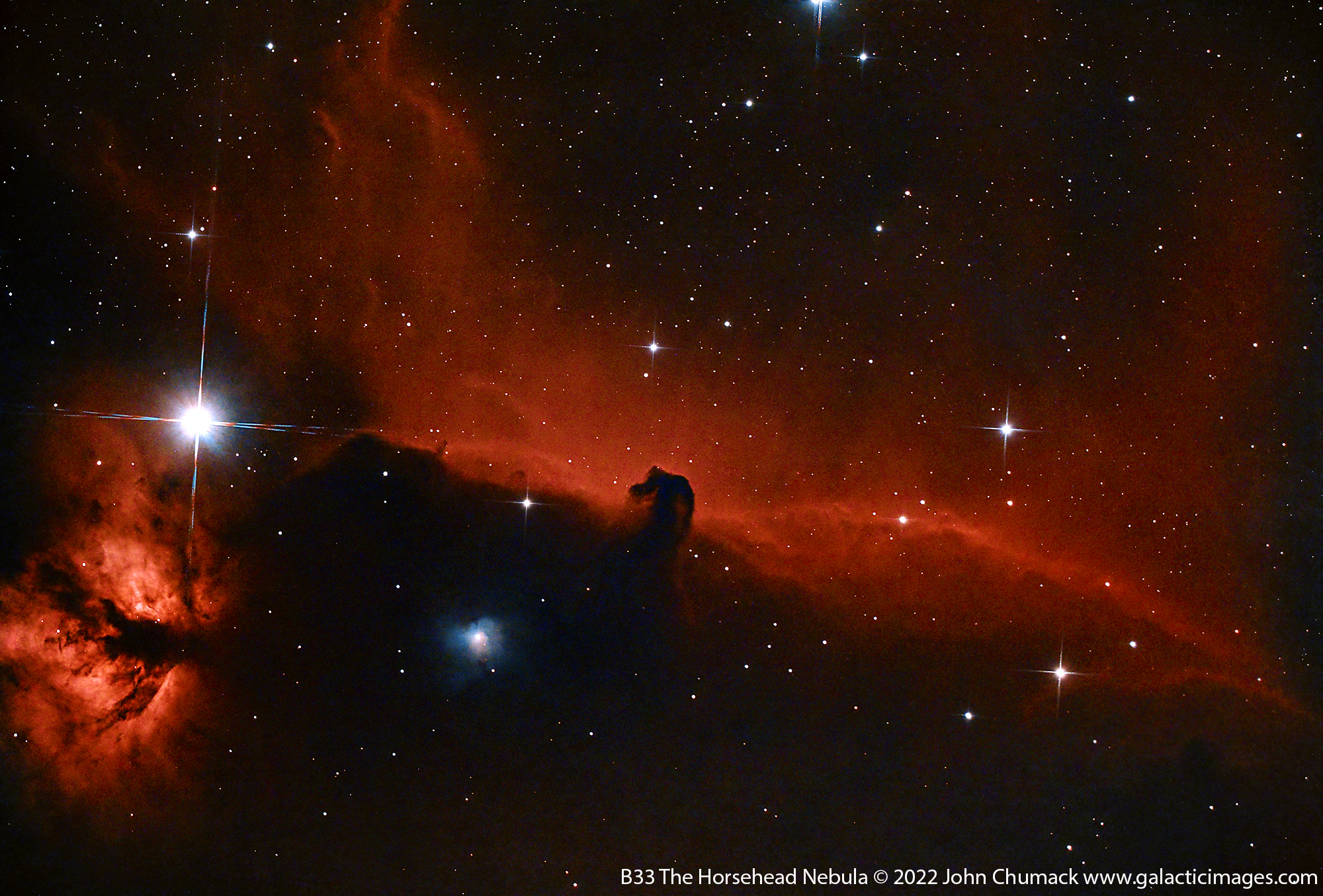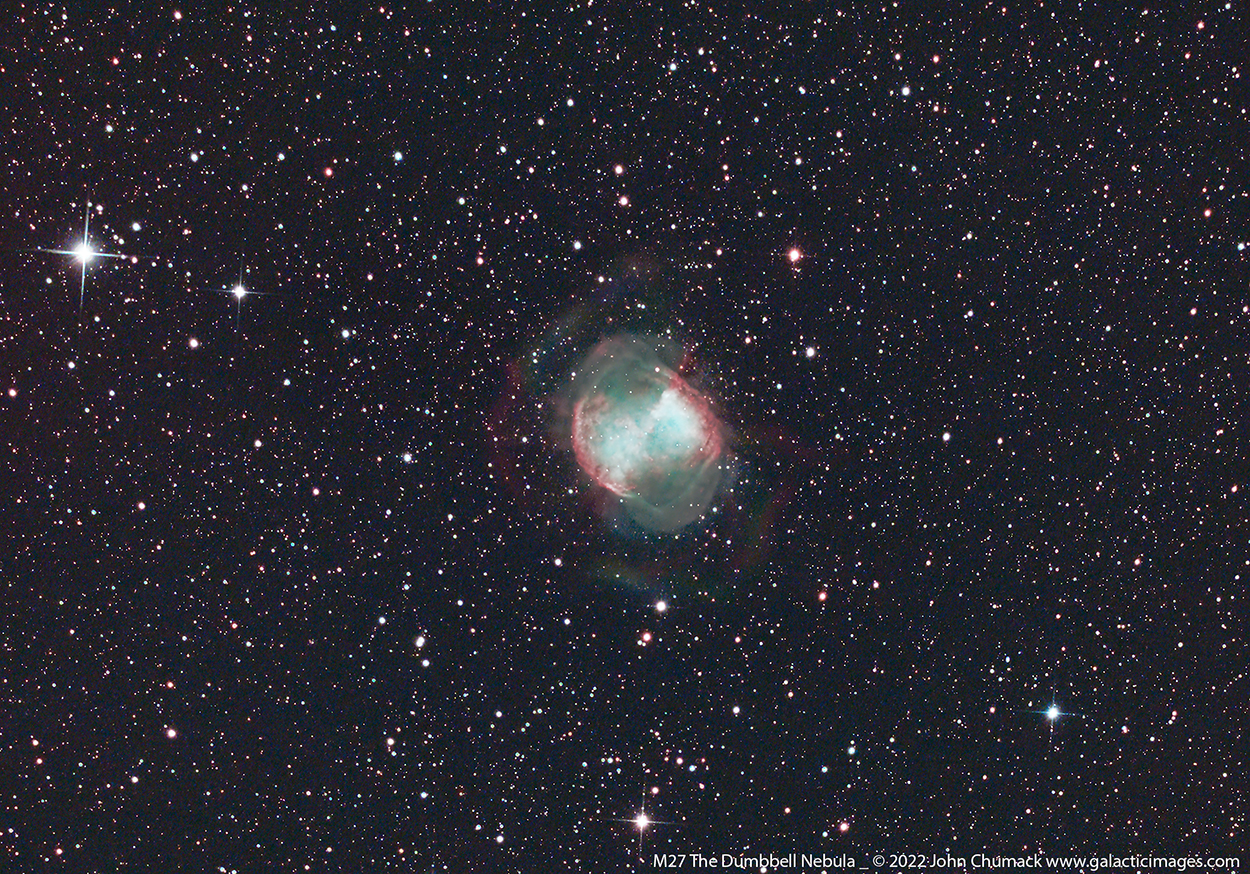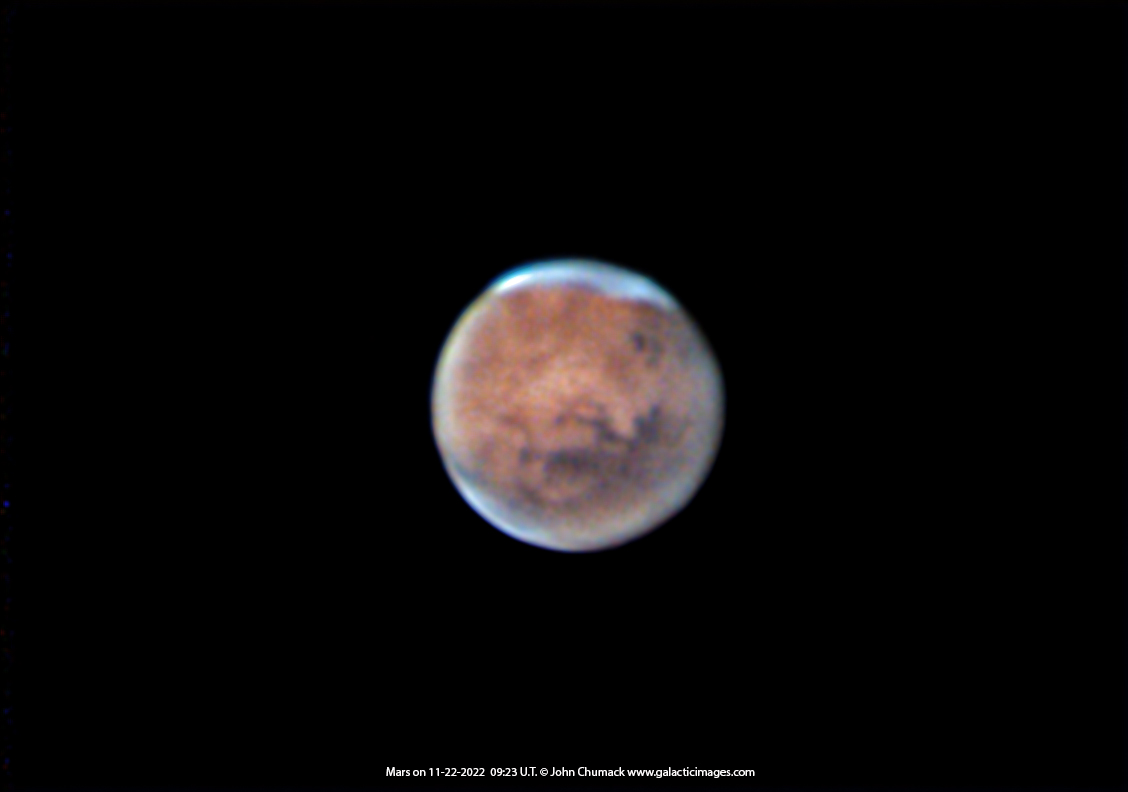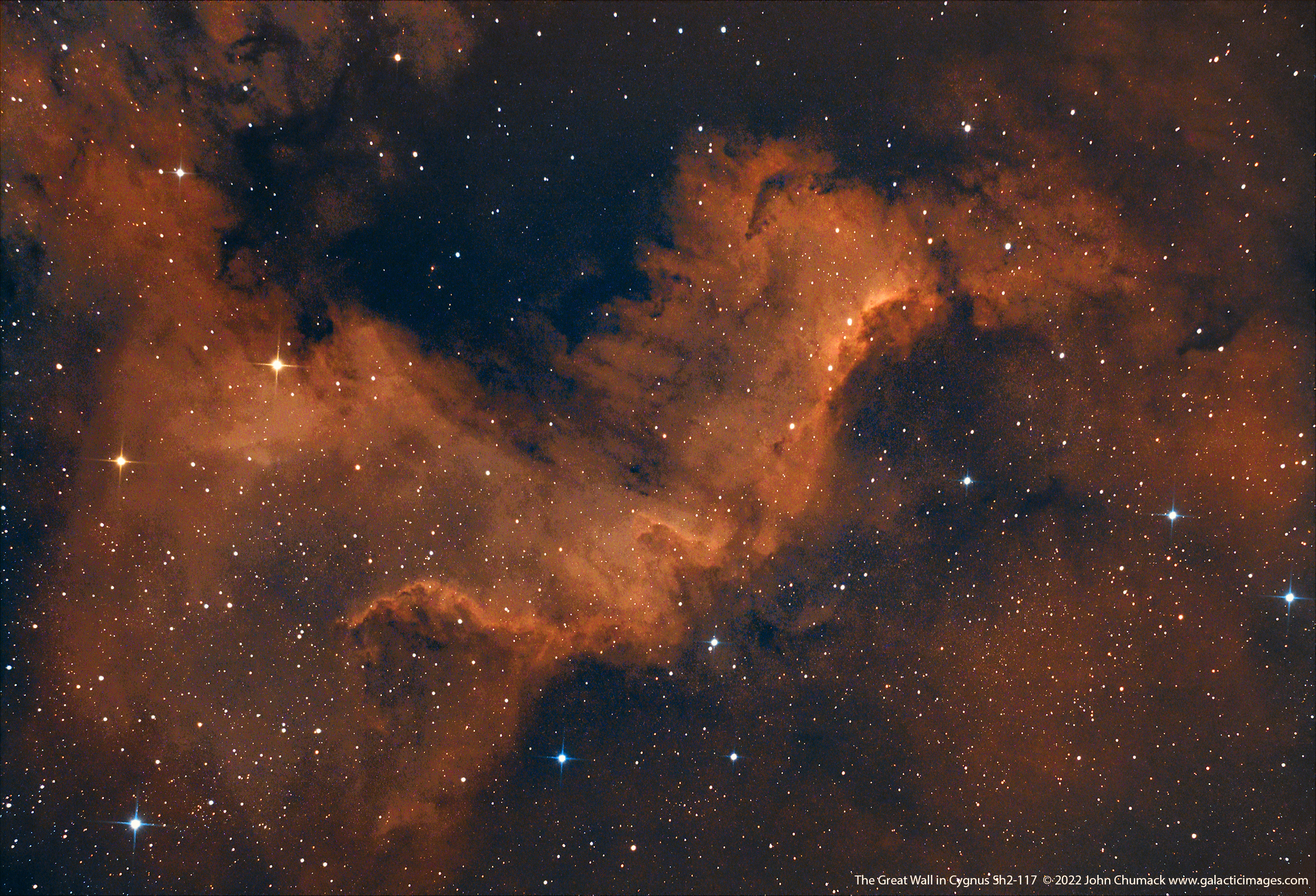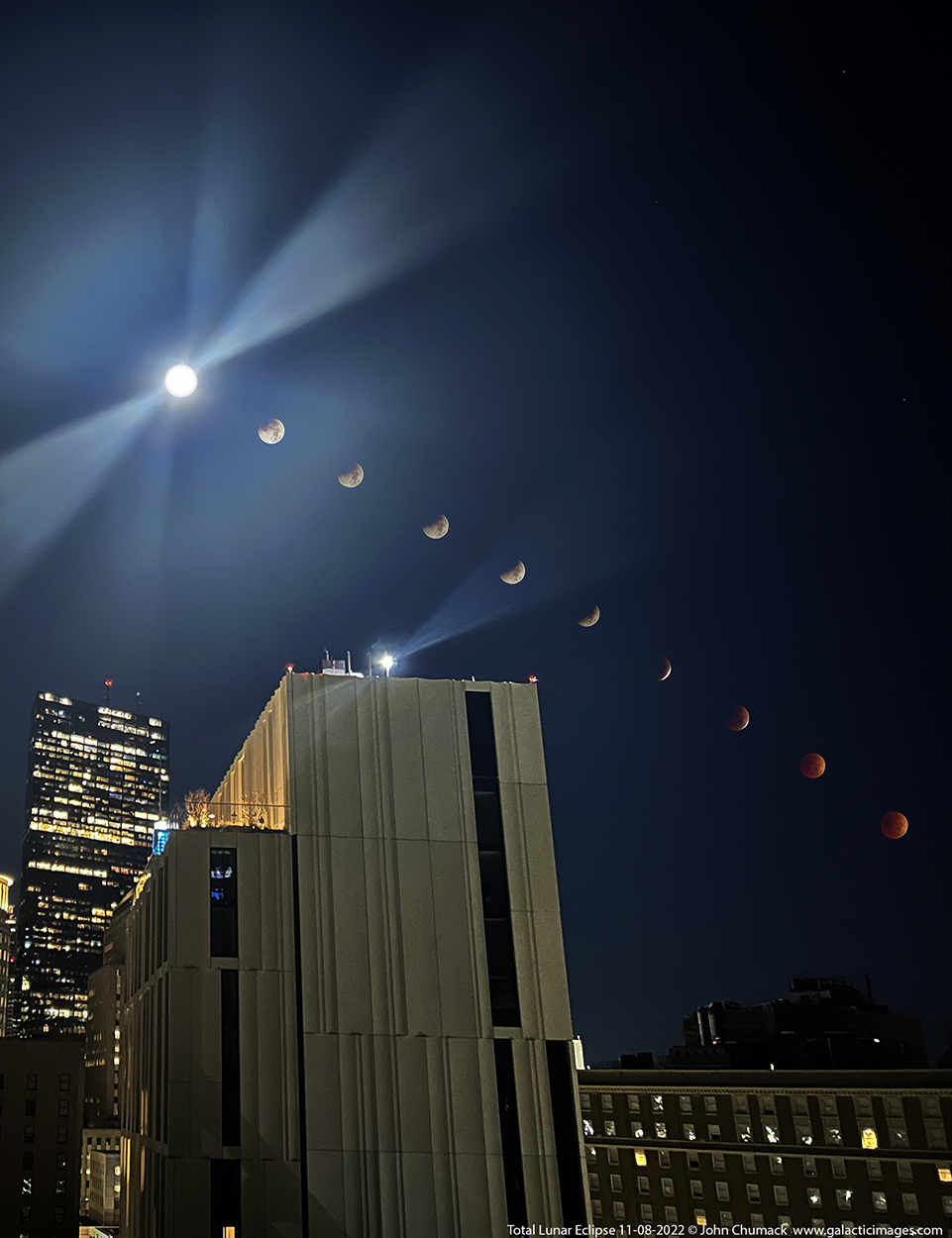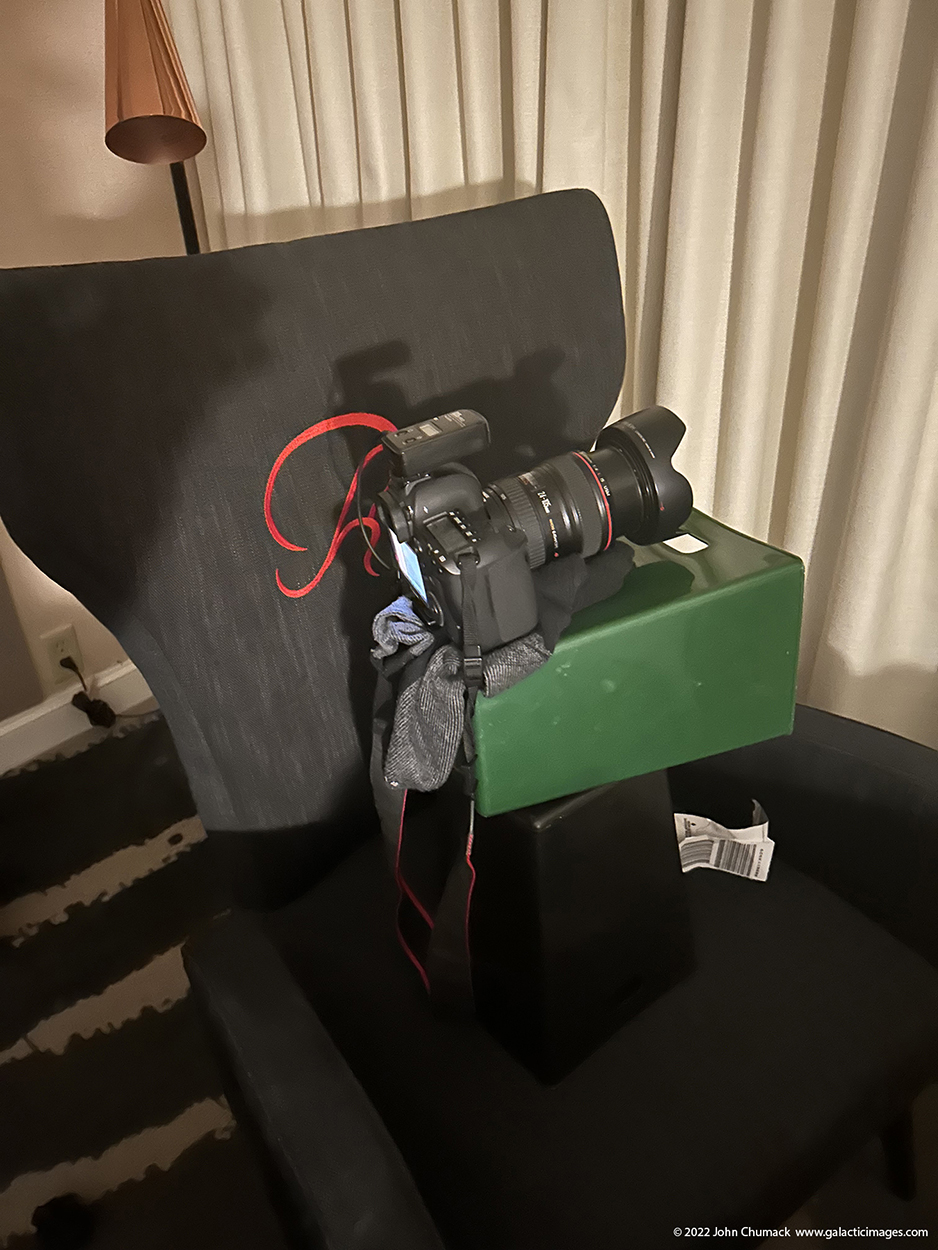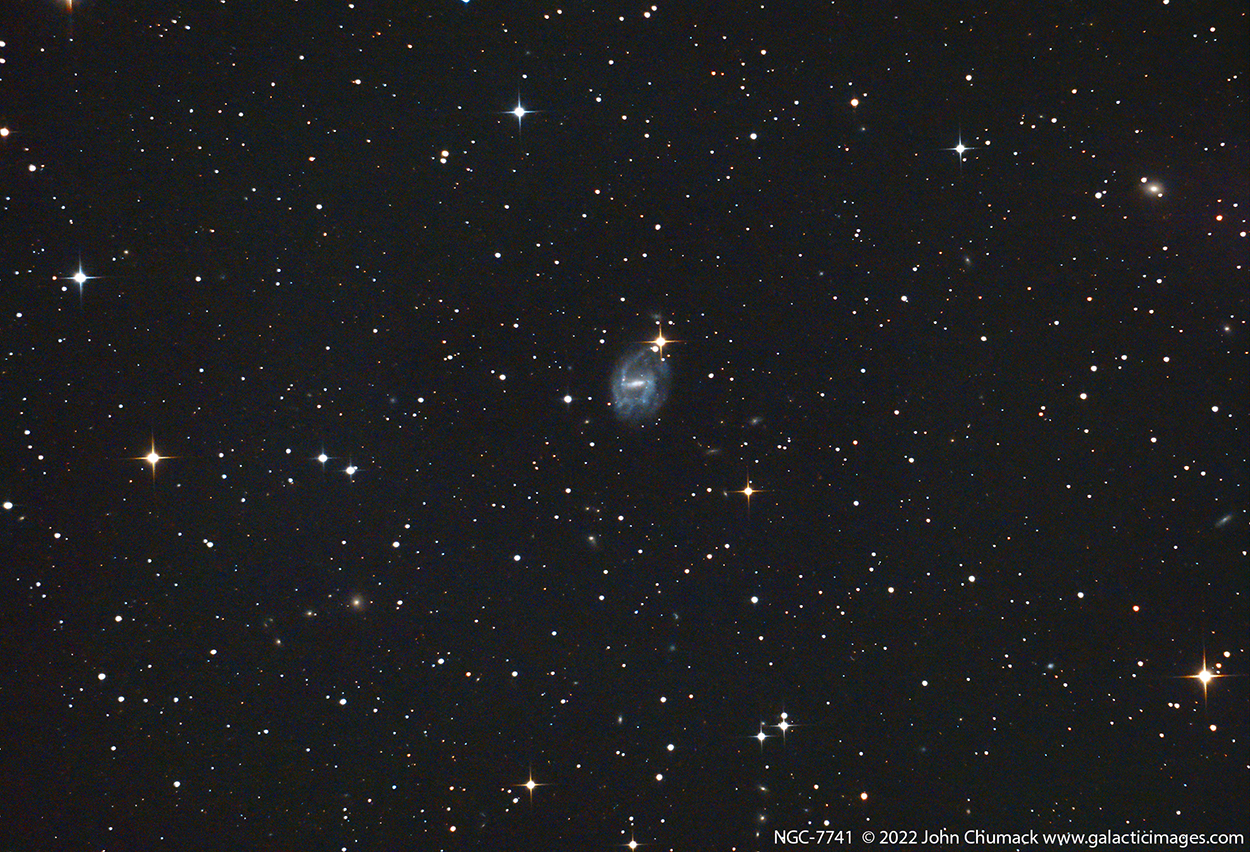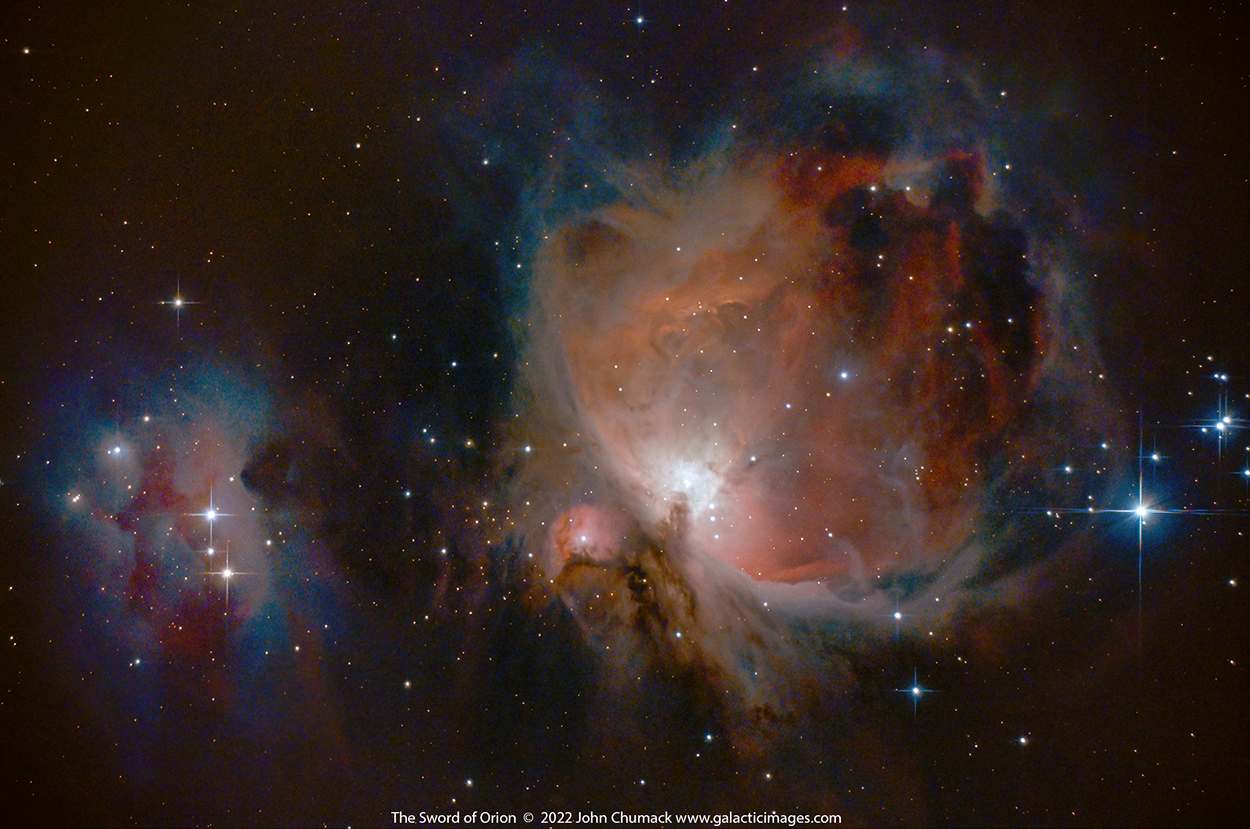The Moon & Mars Occultation on 11-08-2022 03:18 to 03:58 U.T.
Abell 426 – Perseus “A” Galaxy Cluster
Here is my latest image of Abell 426 – Perseus A Galaxy Cluster.
The Perseus cluster (Abell 426) is a cluster of galaxies in the constellation Perseus.
It has a recession speed of 5,366 km/s and a diameter of 863 arc minutes.
It is one of the most massive objects in the known universe, containing thousands of galaxies immersed in a vast cloud of multi-million-degree gas.
The Massive Galaxy cluster is located ~ 240 million light years from Earth and NGC 1275 is a strong radio source Radio (3c 84). Shining at magnitude 12.6, NGC 1275 is the Largest one of the group.
NGC 1275 (also known as Perseus A or Caldwell 24) is a type 1.5 Seyfert galaxy. NGC 1272 is the second largest in the group. Some of the more prominent galaxies in the field are: IC 1907, NGC 1281, 1278, 1279, 1276, 1277, 1274, 1273, 1268, 1270, UGC 2665, and many more PGC galaxies.
Yes, Every little orange fuzzy object is a galaxy, there are well over 100 galaxies visible in this image, but there are many more in the surrounding regions just outside this narrow FOV.
I’m very happy with how this turned out using my 12″ diameter telescope, it is definitely one of my best shots of this Galaxy cluster to date.
TPO 12 inch F4 Newtonian reflector telescope, Baader Coma Corrector, Bisque ME Mount, ZWO 294MC cooled Cmos Camera, L-Pro Filter,
ASI Air Plus, via Wi-Fi to my I-pad, 60 x 2 minute sub exposures, 120 minutes total integration time, from my observatories at JBSPO, in Yellow Springs, Ohio on 11-26-2022.
Best Regards,
John Chumack
www.galacticimages.com
NGC 2903 Barred Spiral Galaxy in Leo – A Close-up
Here is my latest close-up view of this wonderful Galaxy
NGC 2903 is an isolated barred spiral galaxy in the equatorial constellation of Leo,
located about 1.5° due south of Lambda Leonis.
It was discovered by German-born astronomer William Herschel, who cataloged it on November 16, 1784.
It’s one of my favorite Galaxies to hunt down and take a peek at each year! Shining at 9th magnitude,
and is located about 33 million light years away from Earth. It spans about 100,000 light years across.
Note the several smaller background galaxies in the region as well.
TPO 12 inch F4 Newtonian reflector telescope, Baader Coma Corrector, Bisque ME Mount, ZWO 294MC cooled Cmos Camera, L-Pro Filter,
ASI Air, via Wi-Fi to my I-pad, 37 x 2 minute sub exposures, 74 minutes total integration time, from my observatories at JBSPO,
in Yellow Springs, Ohio on 11-25-2022.
Best Regards,
John Chumack
www.galacticimages.com
B33 The Horsehead Nebula in Orion – ZWO 294MC Test
The Horsehead Nebula (also known as Barnard 33) is a small dark nebula in the constellation Orion. One of the most popular Nebula regions in the sky.
The nebula is located just to the south of Alnitak, the easternmost star of Orion’s Belt, and is part of the much larger Orion molecular cloud complex.
The dark Horsehead nebula itself is B33, or Barnard Dark nebula # 33 and red background gas is known as IC434 Emission nebula.
Just below and slightly left is the Blue reflection Nebula NGC2023,
and to the far lower left just below Alnitak(Zeta Orionis) is NGC2024 (Maple Leaf Nebula).
Capture Details:
Celestron C6 F5 Newtonian Reflector Telescope, Celestron Coma Corrector, Software Bisque MyT Mount, ZWO 294mc Cooled Cmos Camera, L-Enhance Filter,
ASI Air Plus via Wi-Fi to my I-pad, 25 x 2 minute subs, 50 minute total integration time from my backyard Observatory(bortle8) in Dayton, Ohio on 09-16-2022.
This image was just a quick test shot from back in September just before clouds rolled in and dawn was brightening up the sky.
Best Regards,
John Chumack
www.galacticimages.com
M27 The Dumbbell Nebula with its faint outer wings!!
Mars on 11-22-2022
Mars on 11-22-2022 at 09:23 U.T.
A mere 17 arc-seconds across, and currently located 82.537 million km (51.26 million miles) from Earth.
Mars is getting closer and brighter!
C-11 SCT Telescope, Televue 5x Barlow, Bisque MYT mount, QHY462C Cmos Camera, Fire-capture SER Video File, best 20% of 14,000 frames. Stacked in Autostakkert & Registax6, Adobe Raw CC 2023.
Taken from my Backyard observatory in Dayton, Ohio, seeing was just average 5 out of 10.
Martian Surface details: Valles Marineris: the largest Canyon in the Solar System
Tharsis Montes (volcanoes); Olympus Mons(largest Volcano);
Tempe Terra; Solis Planum, Lunae Planum
North Polar Hood,
Some Blue Limb Clouds
Best Regards,
John Chumack
www.galacticimages.com
The Great Wall in Cygnus
Sh2-117 or The Great Wall in the constellation Cygnus, A close-up view. SH2-117 is part of NGC 7000, the Lower portion of “The North American Nebula”.
This is a massive star formation region with large amounts of gas & dust visible in this image. The Great Wall is located approximately 2,200 light years away from Earth.
Capture details:
Celestron C6 F5 Newtonian Reflector Telescope, Celestron Coma Corrector, Bisque MyT Mount, ZWO 294MC Cooled Cmos Camera, L-Enhance Filter, ASI Air Plus via Wi-Fi to my I-pad, 45 x 2 minute subs, 90 minute total integration time from my backyard observatory(bortle8) in Dayton, Ohio on 09-16-2022.
Best Regards,
John Chumack
www.galacticimages.com
The Total Lunar Eclipse from the city of Boston, MA. on 11-08-2022.
The Total Lunar Eclipse from the city of Boston, MA. on 11-08-2022.
I was at the 2022 International Digital Image Correlation (I-DIC) Conference on business travel for the University and had to take some shots from downtown Boston.
The 1st shot of Moon was intentionally over exposed to help properly expose the City buildings for my foreground, the following Sequence was captured individually with my Canon 6D DSLR using 24mm-105mm, lens set to 105mm, F7, ISO 400, ranging from 1/2000 sec to 1.3 sec., mirror lock up, live view mode, wireless remote switch, properly exposing the moon during the partial eclipse phases and totality. After aligning & scaling both images they were combined to show the Eclipse Sequence and path as seen from my hotel in Downtown Boston.
Sometimes you just need a chair, trash cans, and sock!
The tripod ii was planning to use, was already in use at our Conference, so I had to come up with a last minute makeshift tripod using one of the hotel’s chairs, two trash cans, and a sock to prop & align the camera for the DSLR sequence, aiming it out the sliding door of my balcony in the hotel.
Best Regards,
John Chumack
NGC 7741 is a Barred Spiral Galaxy in Pegasus
NGC 7741 is a barred spiral galaxy located in the constellation Pegasus. It is located at a distance of ~40 million light years from Earth,
which, given its apparent dimensions, means that NGC 7741 is about 50,000 light years across.
It was discovered by William Herschel on September 10, 1784.
NGC 7741 has a strong bar and two spiral arms. The spiral arms are patchy and diffuse with a (red) HII region visible in this image.
There are a lot of smaller background galaxies visible in the image as well.
TPO 12 inch F4 Newtonian Scope, Baader Coma Corrector, L-Pro Filter, Bisque ME Mount, ZWO 294MC Cooled Cmos Camera,
ASI Air captured via Wi-Fi to I-Pad for a 30 minute total integrated exposure time
from my observatories at JBSPO in Yellow Springs, Ohio on 10-23-2022.
Best Regards,
John Chumack


